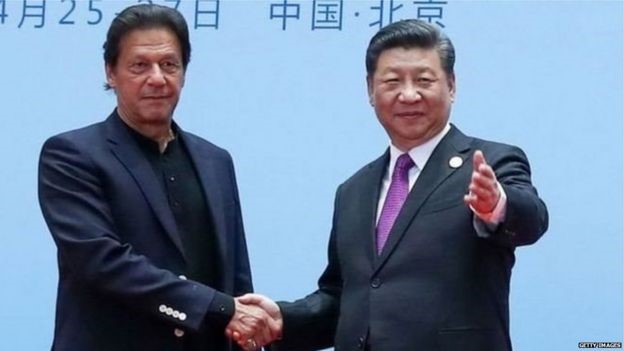How big is the Balochistan obstruction in China-Pakistan Economic Corridor
China-Pakistan friendship is old. And to further strengthen this old friendship, both friends also came together in the field of trade and announced the China-Pakistan Economic Corridor.
Along with the announcement of this corridor in 2015, countries have called this project a game changer of their relationships. However, the foundation of this project was laid in 2008 itself.
Many experts see this project as an attempt by China to serve its interests in Pakistan, and many experts in Pakistan feel that this will only benefit Punjab.
But the truth is that even today a lot has become a part of this project, and quite a lot is still going on. Sometimes financial constraints came in the way, sometimes Pakistan’s needs. A major impediment is said to be of Baluchistan against China. Actually, a large part of this project is in Balochistan.
What is cpec?
The China-Pakistan Economic Corridor or CPEC is part of the business network being built under China’s ambitious Belt and Road Initiative.
Several infrastructure-related projects are underway in Pakistan under CPEC, in which China has an investment of $ 62 billion. China considers Cepec the most important of all the projects of its Belt and Road Initiative. Its success is very important for him.
According to Swarn Singh, Professor of School of International Studies at JNU, China needs much more energy source from Central Asia. He was worried that near the Malacca Water Treaty near Singapore, there might be problems in bringing the source of energy in future. Therefore, China was looking for different routes and chose one of the routes to Gwadar port. It started in the 90s. China initially understood its usefulness for oil imports, later its scope was expanded and other energy and power projects were added later. And named this whole project Cepac.
Swarn Singh says that even after the work has been done for the last three decades, the work of this project has not been completed yet. The arrival of the ship in this port has not started. Swarn Singh considers the rebellion of the people of Balochistan behind this.
What is the problem for the people of Balochistan?
The fundamental objection to China’s investment in Balochistan is that Pakistan, while deciding the future of Balochistan and Gwadar in particular, did not even inform the leadership of Balochistan province in confidence.
Swarn Singh says that it is repeatedly argued on behalf of Baloch algists that the same will happen in CPEC that the federal government of Pakistan or other rich provinces like Punjab will get benefit on the resources of Balochistan. Local people think that China will take possession and the people of Balochistan will not get a chance to use their natural and other resources.
Because of this, people there have been opposing Cepec. This fight is not just a part of the Baloch freedom struggle.
However Gawadar’s picture is changing rapidly. New machinery is coming in the port. Roads, new buildings and colonies are being constructed, but the residents of Gwadar are craving drops of drinking water. Gwadar city is known to get water only a few weeks in a year from Aakad Dam, the only store providing clean water. On the rest of the day, people of Gwadar really yearn for every drop of water.
According to Swaran Singh, the people of Balochistan feel that the local people will not get equal share in the employment and other economic opportunities in the employment opportunities arising there. But many Pakistanis deny this.
Pakistan’s denial
Dr. Mariya Sultan is the Director General of the South Asian Strategic Stability Institute University. She keeps an eye on the relationship between the two countries and this project.
According to him, China is not facing any problem in this project from Balochistan. Rather, they are proving very helpful in this project. She says that when we say that Balochistan is a roadblock to the sepac, then we also have to see how much percentage of people of Balochistan are against it.
They believe that there are very few Baloch, who are associated with and opposed to the extremist organization. Most Baloch people want to see this project completed so that it can help economic development there.
The project has three parts – Western Route, Central Route and Eastern Route. Most of the work on these three has been completed. After that comes the Energy Corridor, the work of setting up many plants in it has also been completed.
She says that it is a misconception that sepek is just a road. There are many other things in it, there is also a rail link. There is also a pipeline. In which the first five years have been completed. Many roads pass through many areas simultaneously. Some people thought that it would be built first in the area of Punjab and later in Balochistan, but it is not so.
Talking to Pakistan, Dr. Mariya said that 90 percent of the infrastructure-related work of the China-Pakistan Economic Corridor has been completed. Some parts of the road are bound to be connected somewhere, but its work is also going on fast. This was the work of the first phase, which was said to be completed in the first five years. Most of it was connected with road connections. Now the work of the next phase is going to start, most of it energy The project is in which Pakistan has to decide which project will be more favorable to them and in what way they have to take it forward.
She does not link the attack on the Chinese consulate in 2018 to this project. According to him, Baloch separatist organization Baloch Liberation Army operates mostly in Europe, not from Pakistan. And Pakistan also considers them extremists.
Baloch Liberation Army attacks on China
On November 2018, China’s consulate in the Clifton area of Karachi was attacked. The Baloch Liberation Army took responsibility for it. 7 people died in it. This was not the first time that Baloch separatists have targeted China.
Earlier, in August 2018, the responsibility of the suicide attack, which was first accepted by the BLA, was by the son of Aslam Baloch himself, close to the district Chagi’s headquarters Dalbandin.
Actually, there is also a truth that China had also talked about preparing a separate army for Pakistan to protect this project. About this, Swarn Singh says that this is the first such incident in itself, when a country has talked about building an army for investment in another country.
Pakistan also accepted this proposal of China. This army, which is called the Special Security Division, is still ready there to protect the Chinese people, Chinese goods and projects. These attacks have also been seen by linking the Chinese government of Baloch separatists with resentment.
Sushant Sarin of the Oxford Research Foundation believes that it is true that Baloch came from the separatists in the beginning with a little time in the CPEC. But she was not the one who stopped the project. They believe that Baloch nuisance is also a reason in the area, but there are many other reasons as well, due to which some projects are being delayed.
According to him, financial crisis is also a reason and the other reason is that Pakistan wants to reduce some things from China and add some things again according to their needs. There are problems due to that. For this, agreement between the two countries has not been fully made.
Sushant says that at the beginning of this project, both countries had an idea of how the rebellion of Baloch people would be dealt with, so a separate army was also talked about.
History of Balochistan Liberation Army
The Balochistan Liberation Army first came into existence in the early 1970s. This was the period when armed rebellion was launched against the rule of Pakistan in Balochistan under former Prime Minister Zulfiqar Ali Bhutto.
However, after the military dictator Ziaul Haq’s occupation of power, talks were held with the leaders of Baloch community. And as a result, after the end of armed rebellion, the Balochistan Liberation Army also went into the background.
Then began a series of attacks on government establishments and security forces in various areas of Balochistan since the year 2000, following the arrest of Nawab Khair Bakhsh Miri, the former leader of the Balochistan High Court, under the rule of former President Pervez Musharraf on the murder of Justice Nawaz Miri. Happened.
With the passage of time, the attacks not only increased but their scope spread to various areas of Balochistan.



